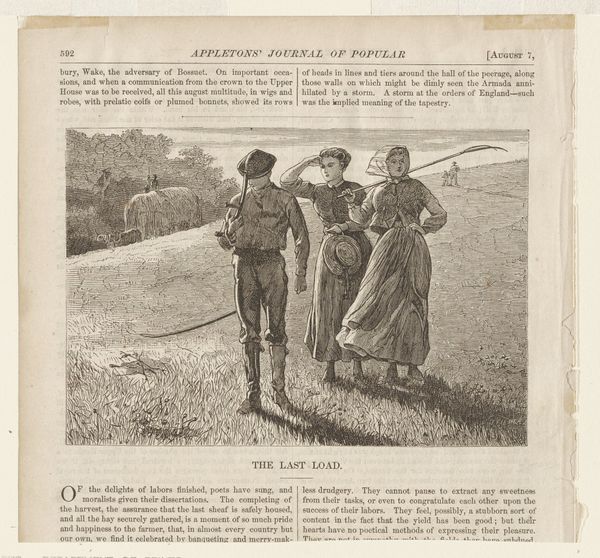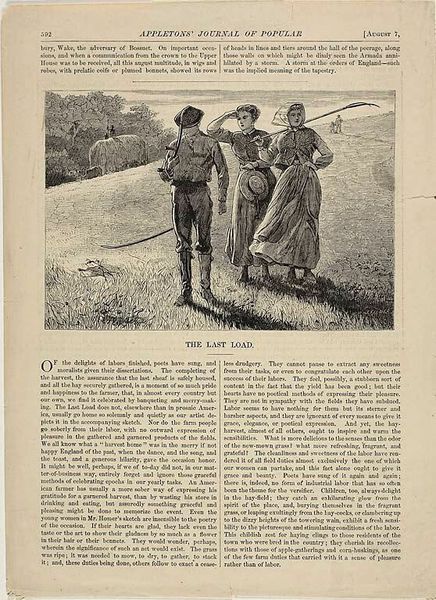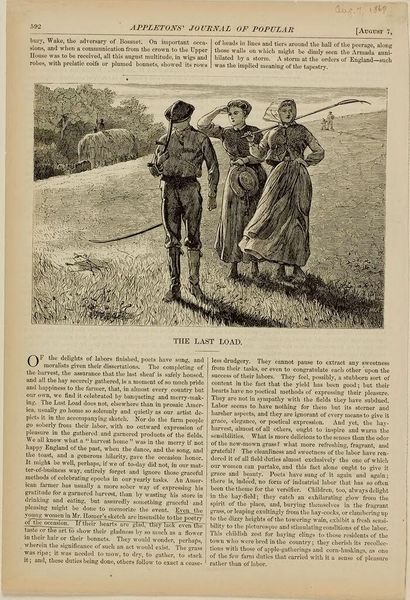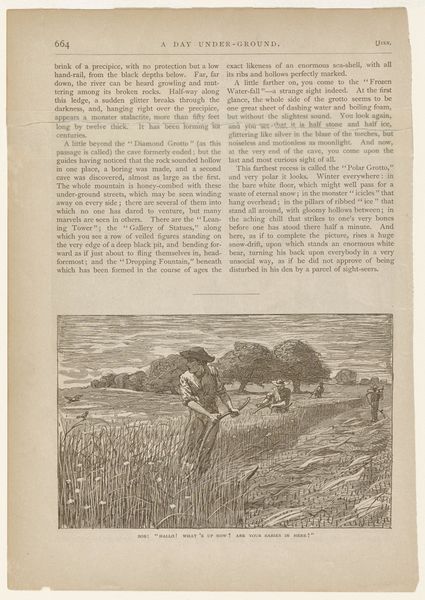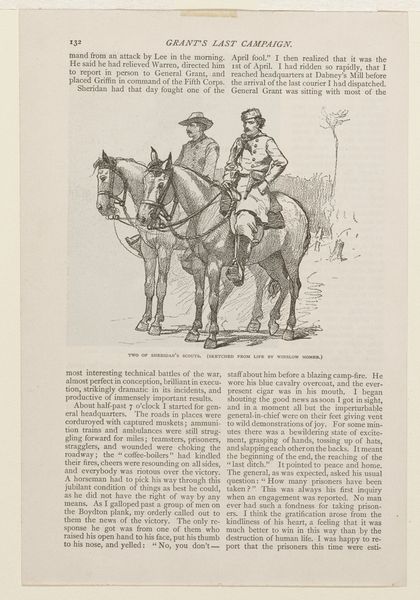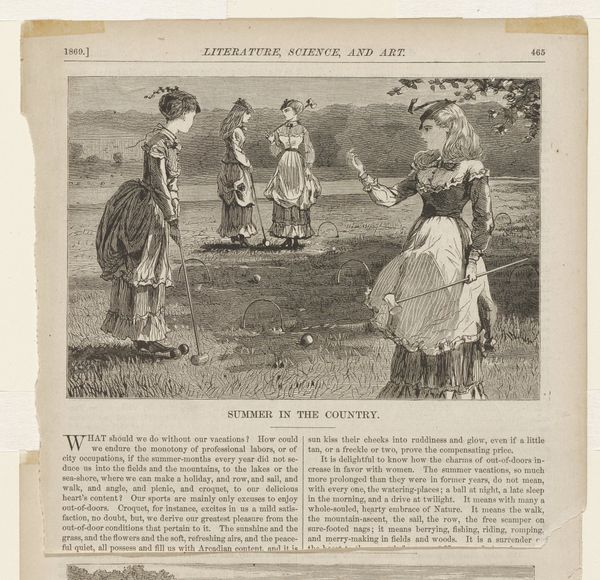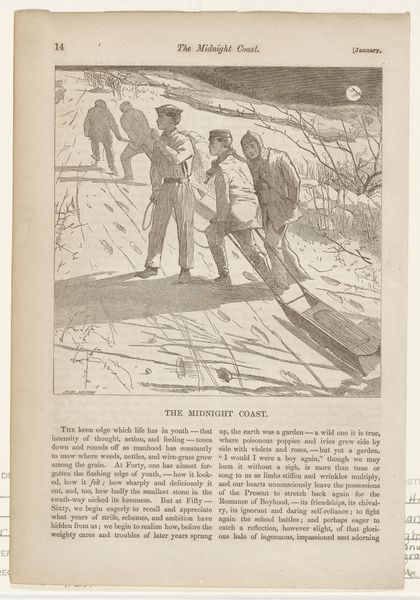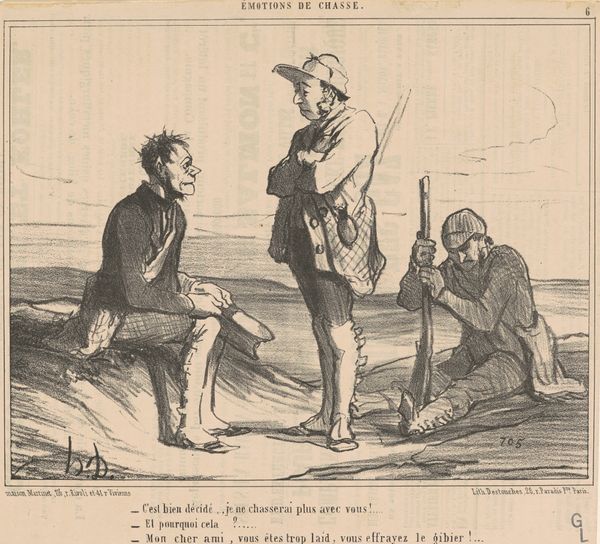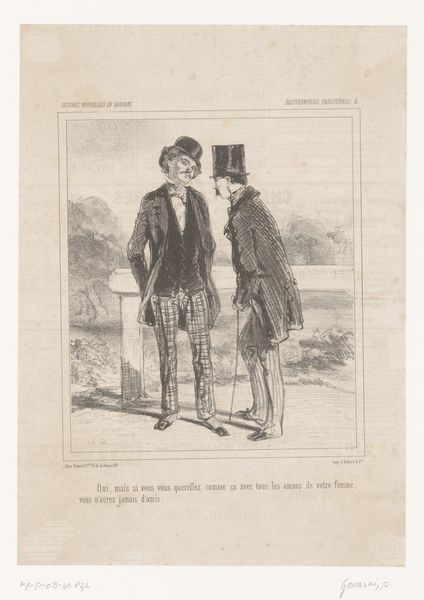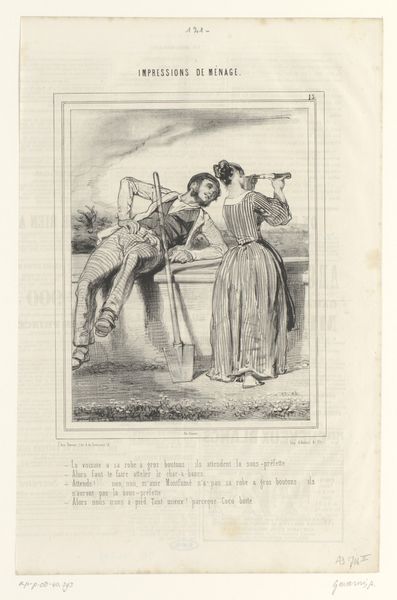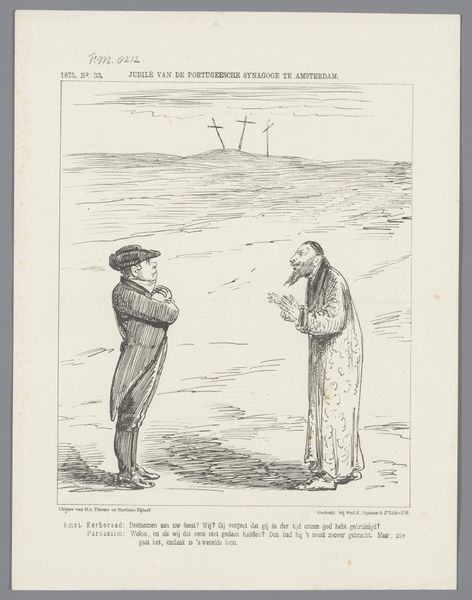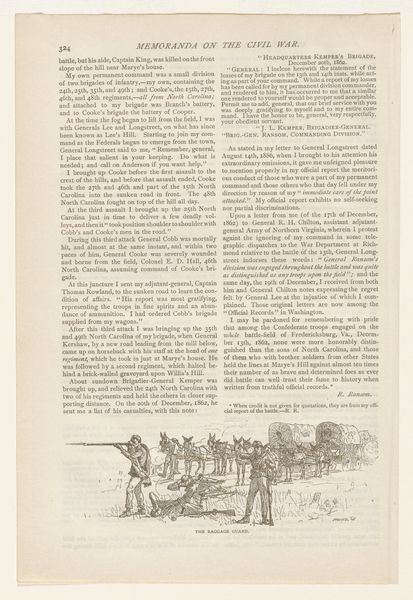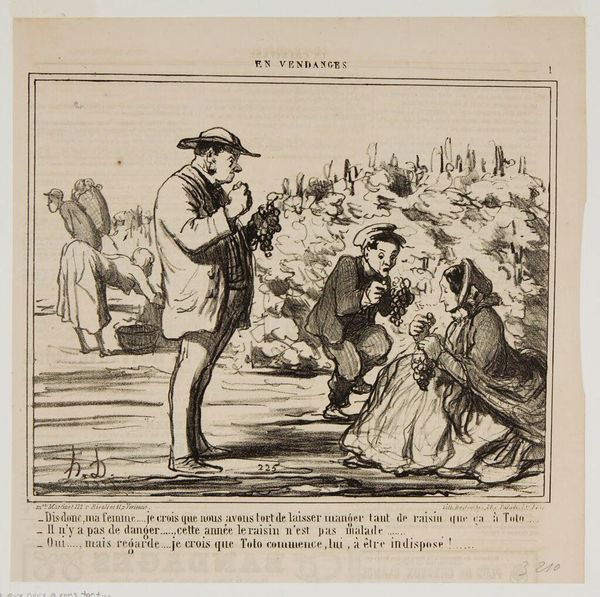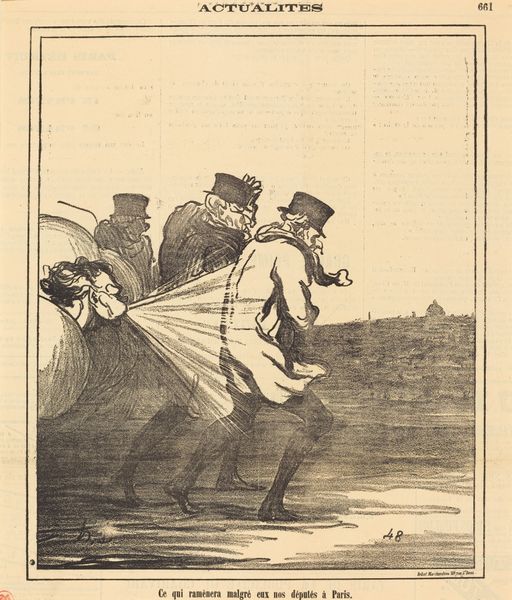
drawing, print, etching, woodcut, wood-engraving
#
drawing
# print
#
etching
#
landscape
#
woodcut
#
united-states
#
genre-painting
#
wood-engraving
#
realism
Dimensions: 4 3/8 x 6 1/2 in. (11.11 x 16.51 cm) (image)10 7/8 x 7 5/8 in. (27.62 x 19.37 cm) (sheet)
Copyright: Public Domain
Curator: So, here we have Winslow Homer's "The Last Load," from 1869, an etching, wood engraving, and woodcut currently residing at the Minneapolis Institute of Art. Editor: This image, at first glance, seems very stark. The figures are working the fields but they are presented with minimal detail in their faces. How do you interpret this work through a Formalist lens? Curator: As a Formalist, my initial attention is drawn to the visual structure itself. The composition relies heavily on linear forms, particularly evident in the rendering of the figures and the harvested crops in the background. Notice the stark contrast between light and shadow, a prominent feature achieved through the etching technique, creating depth. What does the strategic use of the formal element create for you? Editor: I would have to say tension in the presentation and in the daily routines of the farmers represented here. But, it seems somewhat dispassionate. There is little in the way of characterization to pull emotions from the work. Curator: Precisely. It's through this very tension that we can observe how Homer uses formal means to subtly convey meaning. The figures lack distinct individual features, becoming instead, representations of labor and their stoicism. We must move away from any external context and view their arrangement within the space – are they clustered or spread apart, creating a sense of solidarity or isolation? What might these intrinsic qualities communicate? Editor: I suppose that focusing solely on structure shifts the focus from subject to artistic intention. The technique, combined with composition, becomes a more direct expression of how we receive the emotional weight of a piece. Curator: Yes. And that interplay of form and technique gives way to that deeper understanding. It pushes the boundary past just visual elements. The formal elements lead us into how meaning emerges from the artist’s decisions. Editor: Thank you! That's a fascinating and effective method of interpretation. Curator: Indeed. A potent reminder of the critical vocabulary to engage art on its own terms.
Comments
No comments
Be the first to comment and join the conversation on the ultimate creative platform.
